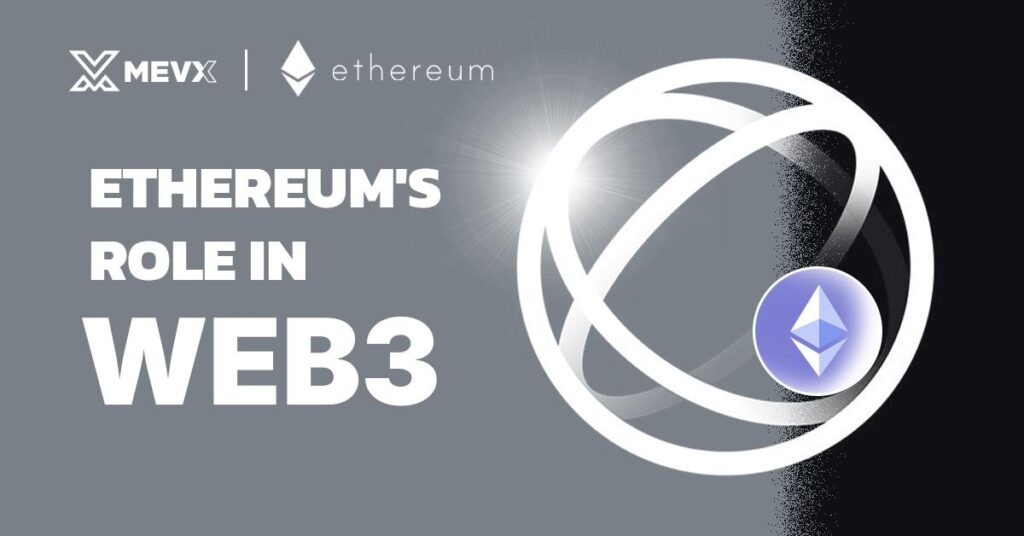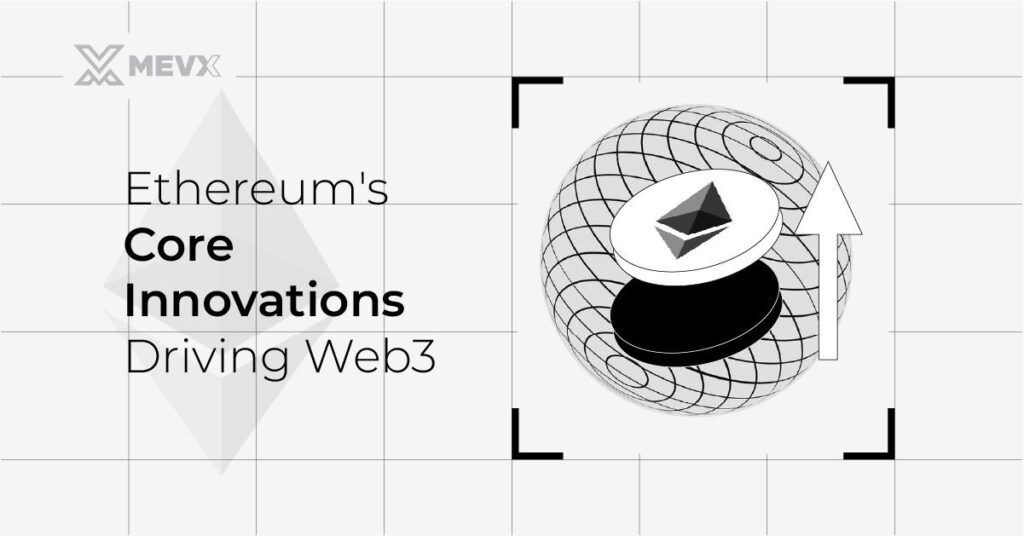Ethereum is the very first revolutionary blockchain that shed light on Web3. Ethereum, being the home of the second-largest cryptocurrency by market capitalization, Ether (ETH), plays a pivotal role in the world of digital currencies. Recognized for its general smart contract functionality, Ethereum is the foundation upon which decentralized finance (DeFi), (non-fungible tokens) NFTs, and thousands of (decentralized applications) dApps have been built.
This article will explore what Ethereum has done for Web3 development, its unique features, and what that means for the greater crypto market all tailored for the complete crypto newbie.

Understanding Web3 and Ethereum’s Role
Firstly, let’s have a look in general:
What is Web3?
Web3 is the decentralized internet that takes away the centralization of the internet by corporations and intermediaries. It leverages blockchain technology to deliver data ownership, privacy, and transparency, with users in control through digital interactions.
Web3 offers innovations such as:
- Decentralization: Applications are run on a distributed network rather than a centralized server.
- Trustlessness: Transactions can be performed without intermediaries, in that they are cryptographically secure using algorithms.
- User Empowerment: Users own their data and digital assets.
Ethereum: The Backbone of Web3
Ethereum heralds the arrival of Web3 by offering support for smart contracts and dApps. As an open-source platform, Ethereum arms developers with a means to build applications that redefine industries, from finance to entertainment.
Explore Ethereum: The ‘World Computer’ Transforming Blockchain and Finance
Key contributions of Ethereum to Web3 include:
- Hosting dApps: Ethereum hosts all kinds of applications that work without a central authority.
- Smart Contracts: These programmable agreements automate on-chain activities that would otherwise require intermediaries.
- Tokenization: Ethereum allows for the creation of custom tokens, used in DeFi, NFTs, and beyond.
Ethereum’s Core Innovations Driving Web3
Explore Ethereum’s core innovations that drives Web3:

Smart Contracts: The Engine of Decentralization
Smart contracts are self-executing codes that automate the enforcement of an agreement. Ethereum’s ability to run smart contracts enables applications like:
- DeFi Platforms: Peer-to-peer lending, borrowing, and trading solutions.
- NFT Marketplaces: Platforms for buying, selling, and showcasing digital art and collectibles.
- Supply Chain Systems: Transparent tracking of goods and services.
Decentralized Finance (DeFi)
Ethereum’s DeFi democratizes financial services, allowing users to lend, borrow, and trade assets without the use of banks. In addition, it advocates for better financial inclusion and removes barriers to entry for users worldwide.
Non-Fungible Tokens (NFTs)
NFTs are digital possessions that are tokenized as being unique and representing ownership over items such as digital art, collectibles, and virtual real estate. Ethereum’s ERC-721 and ERC-1155 standards have driven the recent NFT boom and opened up new markets for artists, players, and entrepreneurs.
Factors Influencing Ethereum’s Price and Ecosystem Growth
These following factors influencing Ethereum ecosystem growth:
Supply and Demand
Ethereum’s price is driven by its capped annual issuance of ETH, at roughly 18 million annually, and an increasing demand from dApps, DeFi platforms, and NFT projects.
Technological Upgrades
Ethereum is shaping up continuously to tackle scalability and efficiency problems. Key improvements include:
- Ethereum 2.0 (Eth2): Transition to proof-of-stake (PoS), enhancing energy efficiency and scalability.
- Layer 2 Solutions: Technologies like Optimism and Arbitrum reduce congestion and transaction costs, fostering broader adoption.
Market Sentiment and Adoption
Positive news, such as regulatory clarity or institutional adoption, increases Ethereum’s price and adoption. On the other hand, security concerns or unfavorable regulations might dampen sentiment.
Ethereum’s Broader Impact on the Crypto Market
How Ethereum affect the crypto market:
Catalyst for Crypto Adoption
As a trailblazer in DeFi, NFTs, and blockchain innovation, Ethereum influences the entire crypto ecosystem. Its success attracts developers and investors to blockchain projects, spurring growth across the market.
The Network Effect
Ethereum’s large developer community, extensive user base, and established applications strengthen its dominance. This network effect ensures continual innovation, increasing the platform’s value and relevance.
Challenges and Competitors
Ethereum still has to contend with strong competitors such as Binance Smart Chain, and Solana offering much faster transactions and much lower fees. Long-term competitiveness will be determined by Ethereum’s ability to innovate through updates like Ethereum 2.0.
Ethereum’s Role in Shaping the Future of Web3
Look more closer at Ethereum’s Role in Web3
Driving Decentralization Across Industries
Ethereum’s versatility has allowed innovations across various sectors. It has been about:
- Finance: Revolutionizing banking through DeFi.
- Art and Media: Taking ownership to a whole new level with NFTs.
- Gaming: Supporting blockchain-based games with in-game economies.
Inspiring Next-Generation Platforms
Success brought forth many other blockchains that implement similar functionalities. Projects like Solana and Polygon fork Ethereum’s framework while focusing on making it more efficient.
A Vision for a Decentralized Internet
Ethereum’s ultimate vision involves a decentralized, trustless internet where users have greater control over their digital lives. This vision underpins Ethereum’s sustained relevance in the crypto and tech spaces.
Tips for New Traders Exploring Ethereum
The following tips that a new trader should know:
Start with Research
Learn the basics underlying Ethereum: use cases, smart contracts, and where Ethereum fits into Web3. The Ethereum website and various developer blogs are great resources.
Monitor Technological Updates
Stay informed about Ethereum’s upgrades, such as Ethereum 2.0 and Layer 2 solutions. These developments influence not just its usability but also its price.
Diversify Your Portfolio
While Ethereum is a robust asset, it is important to consider diversification in other cryptocurrencies and blockchain projects to mitigate risk.
Engage with the Community
Join Ethereum-focused communities on platforms like Discord, Reddit, or Twitter. Networking with enthusiasts and developers provides insights and opportunities to learn.
Conclusion
As it is one of the primary building blocks of Web3, Ethereum will forever lead in some respect within the cryptocurrency space. Ethereum reshapes industries and helps evolve the internet by powering innovations, such as DeFi, NFTs, and decentralized governance.
Knowledge regarding Ethereum’s potential by the new trader and up-to-date knowledge about technological advancements and market trends go a long way in making wise investment decisions. Ethereum, as the growth in the crypto space happens, will always be at the center of developments in the future of decentralization.
FAQs
1. What is Ethereum’s role in Web3?
Ethereum is a foundational blockchain for Web3, enabling smart contracts, decentralized applications (dApps), decentralized finance (DeFi), and NFTs.
2. How does Ethereum support decentralized applications (dApps)?
Ethereum provides a flexible, open-source platform where developers can build dApps using its smart contract functionality and secure infrastructure.
3. Why is Ethereum significant for DeFi?
Ethereum powers many DeFi platforms, offering decentralized financial services like lending, borrowing, and trading without intermediaries.
4. What are Ethereum’s contributions to the NFT ecosystem?
Ethereum introduced ERC-721 and ERC-1155 token standards, forming the backbone of NFT creation, trade, and ownership verification.
5. What are Ethereum’s core innovations for Web3?
Ethereum’s innovations include smart contracts, tokenization, DeFi platforms, and Layer 2 scaling solutions like Optimism and Arbitrum.
6. What is Ethereum 2.0, and how does it impact Web3?
Ethereum 2.0 transitions to a proof-of-stake (PoS) consensus mechanism, improving scalability, energy efficiency, and supporting broader Web3 adoption.
Share on Social Media:
